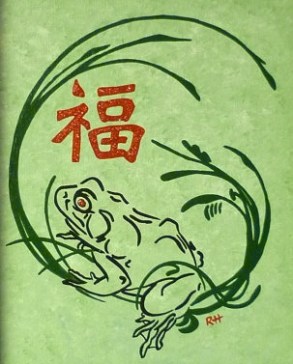
Ficus Benghalensis
by Michael Minassian
I like the quiet blue house
at the end of the block,
the one next to the tall banyan tree:
they say Jack Kerouac
lived there ’57 to ’58
and wrote The Dharma Bums
on one long continuous scroll
like some beat Bedouin
scribe burying sacred texts
inside pottery jars
in the back of caves —
sharing space with his mother,
typewriter and a bottle,
sometimes he felt
so cramped he slept
in the backyard
beneath the dangling roots
of the banyan tree
like a priest or goat herder
dreaming of America
in the long paragraph
of the past:
Orlando, the dead sea,
the hanging gardens of Babylon.
© 2007 Michael Minassian
Previously published in The Dos Passos Review
PHOTO: 1418 Clouser Avenue, Orlando, Florida, Jack Kerouac’s residence while writing The Dharma Bums. (Photo by Maksim.)

NOTE FROM THE AUTHOR: When I was a college professor, I produced a series of podcasts of visits to writers’ homes, including Hemingway in Key West, Flannery O’Connor in Savannah, and Jack Kerouac in Orlando. The Kerouac home was the most difficult to find. After driving in circles in a residential neighborhood, I stopped to ask directions. The first person I questioned had never even heard of Jack Kerouac. But a couple, out walking their dog, knew exactly where the house was located. Armed with my notebook and camera, I approached the house with some caution. The site of The Kerouac Project, a writer’s residency program, a previous resident had posted that he felt intruded upon because tourists kept knocking on the door or peeking through the window. But the current resident, Darlyn Finch Kuhn, rather than being put out by my presence, invited me into the house and gave me a leisurely tour, allowing me to photograph the interior and graciously let me cool off with iced tea before I left.
PHOTO: The author on the porch of 1418 Clouser Avenue, in the College Park section of Orlando, Florida, where Jack Kerouac lived for a time during the late 1950s.

ABOUT THE AUTHOR: Michael Minassian’s poems and short stories have appeared recently in such journals as Comstock Review, Main Street Rag, Poet Lore, and Third Wednesday. He is also a Contributing Editor for Verse-Virtual, an online magazine. His chapbooks include poetry, The Arboriculturist (2010), and photography, Around the Bend (2017). His poetry collection, Time is Not a River, published in 2020 is available on Amazon. Visit him at michaelminassian.com.












